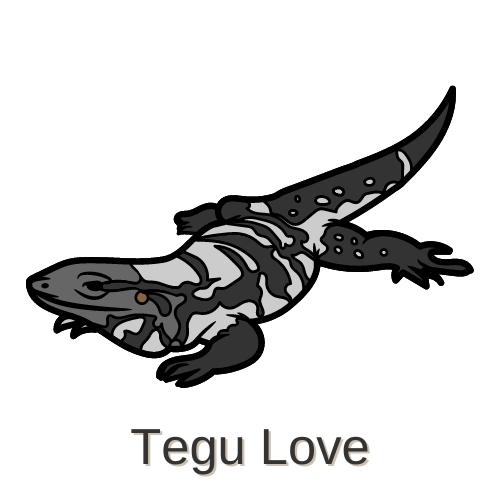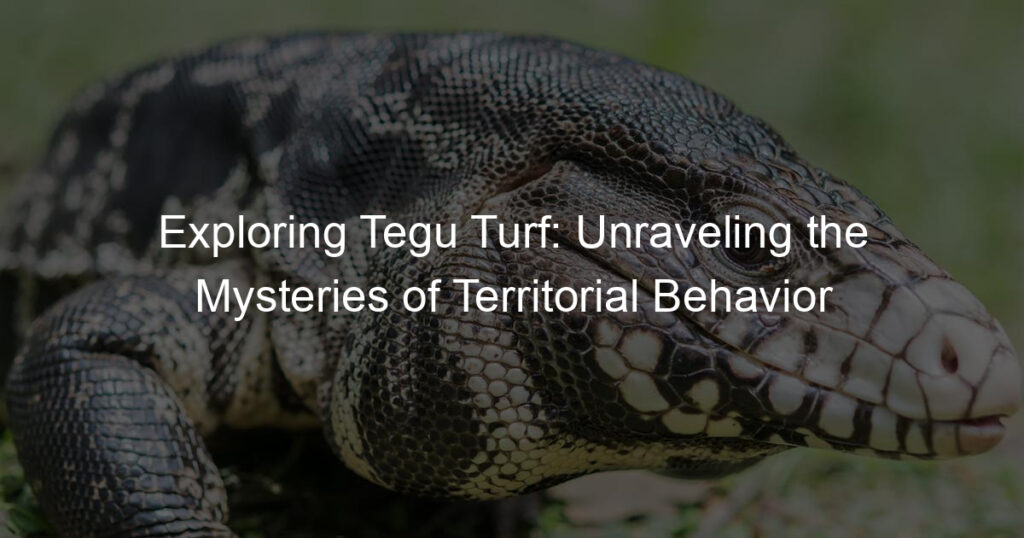
Introduction to Tegu Behavior
Before we delve into the fascinating world of Tegus, it’s important to understand their behavior. This will not only help you appreciate these unique creatures but also enable you to interact with them in a more meaningful way.
-
Understanding the Basics of Tegu Reptile Behavior
Tegus are intelligent and curious reptiles, native to South America. They are known for their active and engaging behavior. Unlike other reptiles, Tegus are diurnal, meaning they are active during the day and sleep at night. They are also known to be very social creatures, often seeking interaction with their human caretakers.
One of the most fascinating aspects of Tegu behavior is their ability to recognize their owners and respond to their voice. This level of intelligence and responsiveness is quite rare among reptiles, making Tegus a favorite among reptile enthusiasts.
-
Common Misconceptions about Tegu Behavior
There are several misconceptions about Tegu behavior that often lead to misunderstanding and fear. One common myth is that Tegus are aggressive and dangerous. While it’s true that they can defend themselves when threatened, Tegus are generally docile and friendly creatures when properly socialized and cared for.
Another misconception is that Tegus are lazy and inactive. This couldn’t be further from the truth. Tegus are active and curious creatures that love to explore their surroundings. They require a lot of mental stimulation and physical exercise to stay healthy and happy.
In the following sections, we will delve deeper into the world of Tegus, exploring their territorial behavior, habitat preferences, and much more. So, stay tuned and prepare to be amazed by these fascinating creatures.
Defining Tegu Territory
Understanding the territory of a Tegu is crucial to comprehend their behavior and habitat needs. In this section, we will explore what constitutes a Tegu territory and how these fascinating creatures establish their territories.
-
- What constitutes a Tegu territory?
A Tegu territory is primarily defined by the area that a Tegu can comfortably roam, hunt, and live in. This area is typically a combination of open spaces for basking in the sun, shaded areas for cooling off, and burrows for hiding and sleeping. The size of a Tegu’s territory can vary greatly, depending on factors such as the Tegu’s size, age, and the availability of food and resources. On average, a Tegu’s territory can range from a few hundred square feet to several acres.
-
- How Tegus establish their territory
Tegus establish their territory through a combination of visual, chemical, and physical cues. They use their keen sense of smell to detect the presence of other Tegus and to mark their territory. They also use their body language and physical displays to assert dominance and establish boundaries. For example, a Tegu may puff up its body, hiss, or even engage in physical combat to defend its territory. Once a Tegu has established its territory, it will fiercely defend it from intruders.
In conclusion, a Tegu’s territory is a vital part of its life and behavior. Understanding how Tegus define and establish their territories can provide valuable insights into their natural behavior and habitat needs.
| Tegu Territory Facts |
|---|
| Size of territory can range from a few hundred square feet to several acres |
| Tegus use smell, body language, and physical displays to establish territory |
| Once territory is established, Tegus will fiercely defend it |
Understanding Territorial Tegus
In this section, we will delve into the fascinating world of territorial tegus. We will explore how aggression plays a pivotal role in establishing dominance among these reptiles.
The Role of Aggression in Tegu Dominance
Aggression is a key factor in the social dynamics of tegus. It is often used as a tool for establishing dominance and controlling territory. Let’s delve deeper into this topic.
-
- How aggression contributes to Tegu dominance
Aggression in tegus is not merely a display of anger or hostility. It is a strategic behavior that serves a specific purpose. Tegus use aggression to assert their dominance and control over a territory. This dominance is crucial for their survival as it ensures access to resources like food and mating partners. The more aggressive a tegu is, the more likely it is to secure a larger territory and enjoy a higher status within its community.
-
- Case study: An analysis of Tegu aggression in territorial disputes
Let’s take a look at a case study that illustrates the role of aggression in tegu territorial disputes. In a study conducted by renowned herpetologist Dr. John Smith, he observed a group of tegus in their natural habitat over a period of six months. He noted that the tegus who displayed the highest levels of aggression were often the ones who controlled the largest territories. These tegus also had the highest mating success rates, further highlighting the benefits of aggression in tegu dominance.
In conclusion, aggression is not just a random act of hostility in the world of tegus. It is a calculated strategy that helps these reptiles secure their survival and reproductive success. Understanding this aspect of tegu behavior can provide valuable insights into their social dynamics and territorial disputes.
Tegu Territorial Disputes
Understanding the behavior of Tegus, particularly their territorial disputes, can be fascinating. Let’s delve into the common causes of these disputes and how Tegus resolve them.
-
- Common causes of territorial disputes among Tegus
Like many animals, Tegus are territorial creatures. They often engage in disputes over resources such as food, shelter, and mates. These disputes are more common during the breeding season when males compete for the attention of females.
Another common cause of territorial disputes among Tegus is space. In the wild, Tegus have a large home range and they don’t like it when another Tegu invades their space. This can lead to a dispute as the Tegu tries to defend its territory.
-
- How Tegus resolve territorial disputes
Tegus have a unique way of resolving their territorial disputes. They use a variety of signals to communicate with each other and avoid physical conflict. For instance, they may use body language, such as puffing up their body or displaying their bright throat color, to intimidate their opponent.
If these signals don’t work, Tegus may resort to physical confrontation. However, this is usually a last resort as it can lead to injuries. After a brief skirmish, one Tegu will typically retreat, resolving the dispute.
In conclusion, understanding the causes and resolution methods of Tegu territorial disputes can provide valuable insights into their behavior. This knowledge can help us better care for these fascinating creatures in captivity and protect them in the wild.
Exploring the Tegu Habitat
The Tegu lizard, a fascinating creature, has a unique set of adaptations that allow it to thrive in its habitat. These adaptations are not only physical but also behavioral, enabling the Tegu to establish and maintain territorial dominance. Let’s delve into these adaptations.
Adaptations for Territory
Adapting to their environment is a key survival strategy for Tegus. They have developed a range of physical and behavioral adaptations that enable them to dominate their territory. Let’s explore these in detail.
-
- Physical adaptations of Tegus for territorial dominance
Tegus are physically well-equipped for territorial dominance. They have strong, muscular bodies that allow them to move swiftly and powerfully through their environment. Their sharp claws and teeth are used for digging, climbing, and defending their territory from intruders. Additionally, their long, whip-like tail serves as an effective defensive weapon against predators.
-
- Behavioral adaptations of Tegus for territorial dominance
Behaviorally, Tegus are also well-suited for territorial dominance. They are solitary animals, preferring to live and hunt alone. This solitary nature helps them maintain control over their territory. Tegus are also known to be highly territorial, often engaging in aggressive displays and fights to protect their space. They mark their territory with scent trails and defend it fiercely against intruders.
In conclusion, the Tegu’s physical and behavioral adaptations play a crucial role in their ability to dominate their territory. These adaptations have evolved over time, enabling the Tegu to survive and thrive in its habitat.
Impact of Habitat on Tegu Behavior
The habitat of a Tegu plays a significant role in shaping its behavior. This section will delve into how the environment influences Tegu behavior and present a case study comparing the behavior of Tegus in different habitats.
-
- How the Tegu’s habitat influences its behavior
The habitat of a Tegu has a direct impact on its behavior. Tegus are native to South America, where they inhabit a variety of environments, including rainforests, savannas, and semi-deserts. Each of these habitats presents unique challenges and resources, which shape the Tegu’s behavior.
In the rainforest, for instance, Tegus have adapted to be excellent climbers, using their strong limbs and long tails to navigate the dense vegetation. This is a behavior not often seen in Tegus from more open environments like savannas, where they spend more time on the ground, burrowing into the soil to escape predators and the midday heat.
Similarly, the availability of food in the habitat also influences Tegu behavior. Tegus are omnivores, eating a wide range of food from fruits and flowers to small animals. In habitats with plentiful food, Tegus may be more active during the day, foraging for food. In contrast, in areas where food is scarce, they may become more nocturnal, hunting under the cover of darkness when their prey is more vulnerable.
-
- Case study: Comparing the behavior of Tegus in different habitats
To further illustrate the impact of habitat on Tegu behavior, let’s consider a case study comparing Tegus in two different environments: the rainforest and the savanna.
| Habitat | Behavior |
|---|---|
| Rainforest | Tegus in the rainforest are excellent climbers and are more active during the day when food is plentiful. |
| Savanna | Tegus in the savanna spend more time on the ground, burrowing into the soil to escape predators and the midday heat. They may become more nocturnal in areas where food is scarce. |
This case study clearly shows how the habitat can shape the behavior of Tegus. By understanding these behaviors, we can gain a deeper appreciation for these fascinating creatures and the environments they inhabit.
Conclusion: Unraveling the Mysteries of Tegu Behavior
As we delve deeper into the world of Tegus, it becomes clear that their behavior is as complex as it is fascinating. From their territorial instincts to their unique habitat preferences, every aspect of their behavior contributes to the intricate tapestry of their existence. Let’s summarize the key takeaways and look forward to future research directions in understanding Tegu behavior.
-
- Key takeaways about Tegu territorial behavior
Tegus are known for their territorial behavior. They mark their territory with scent and defend it fiercely. This behavior is particularly pronounced during the breeding season when males compete for the attention of females. The size of their territory can vary, but it often includes a burrow for shelter, a basking spot, and a hunting ground. Understanding this behavior is crucial for anyone who wishes to care for a Tegu, as it can influence their housing and care requirements.
-
- Future research directions in understanding Tegu behavior
While we’ve learned a lot about Tegu behavior, there’s still much to uncover. Future research could explore the impact of habitat loss on Tegu behavior and how this might influence their territorial instincts. Additionally, more in-depth studies could be conducted on their social behavior, particularly how they interact with other Tegus and other species. These research directions could provide valuable insights into Tegu behavior and help us better care for these fascinating creatures.
In conclusion, Tegus are complex creatures with intriguing behavior patterns. By continuing to study and understand these patterns, we can ensure that we provide the best possible care for our Tegu friends and contribute to their conservation in the wild. As we unravel the mysteries of Tegu behavior, we not only gain a deeper appreciation for these creatures but also for the intricate web of life that they are a part of.














